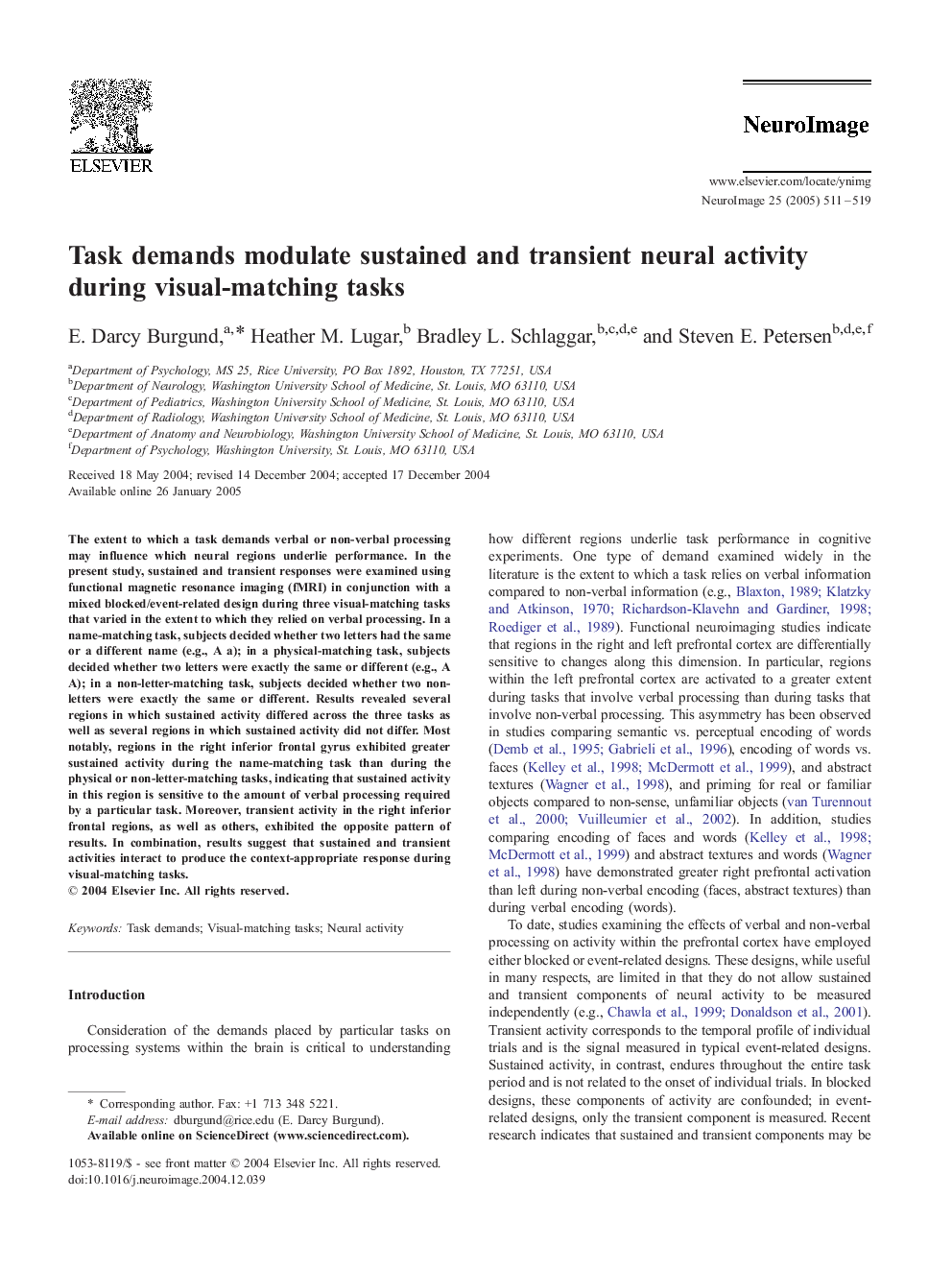| Article ID | Journal | Published Year | Pages | File Type |
|---|---|---|---|---|
| 9198144 | NeuroImage | 2005 | 9 Pages |
Abstract
The extent to which a task demands verbal or non-verbal processing may influence which neural regions underlie performance. In the present study, sustained and transient responses were examined using functional magnetic resonance imaging (fMRI) in conjunction with a mixed blocked/event-related design during three visual-matching tasks that varied in the extent to which they relied on verbal processing. In a name-matching task, subjects decided whether two letters had the same or a different name (e.g., A a); in a physical-matching task, subjects decided whether two letters were exactly the same or different (e.g., A A); in a non-letter-matching task, subjects decided whether two non-letters were exactly the same or different. Results revealed several regions in which sustained activity differed across the three tasks as well as several regions in which sustained activity did not differ. Most notably, regions in the right inferior frontal gyrus exhibited greater sustained activity during the name-matching task than during the physical or non-letter-matching tasks, indicating that sustained activity in this region is sensitive to the amount of verbal processing required by a particular task. Moreover, transient activity in the right inferior frontal regions, as well as others, exhibited the opposite pattern of results. In combination, results suggest that sustained and transient activities interact to produce the context-appropriate response during visual-matching tasks.
Keywords
Related Topics
Life Sciences
Neuroscience
Cognitive Neuroscience
Authors
E. Darcy Burgund, Heather M. Lugar, Bradley L. Schlaggar, Steven E. Petersen,
